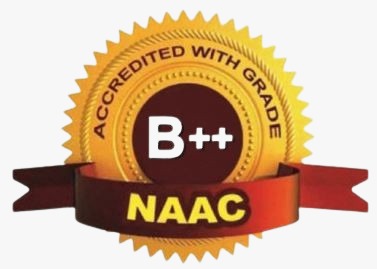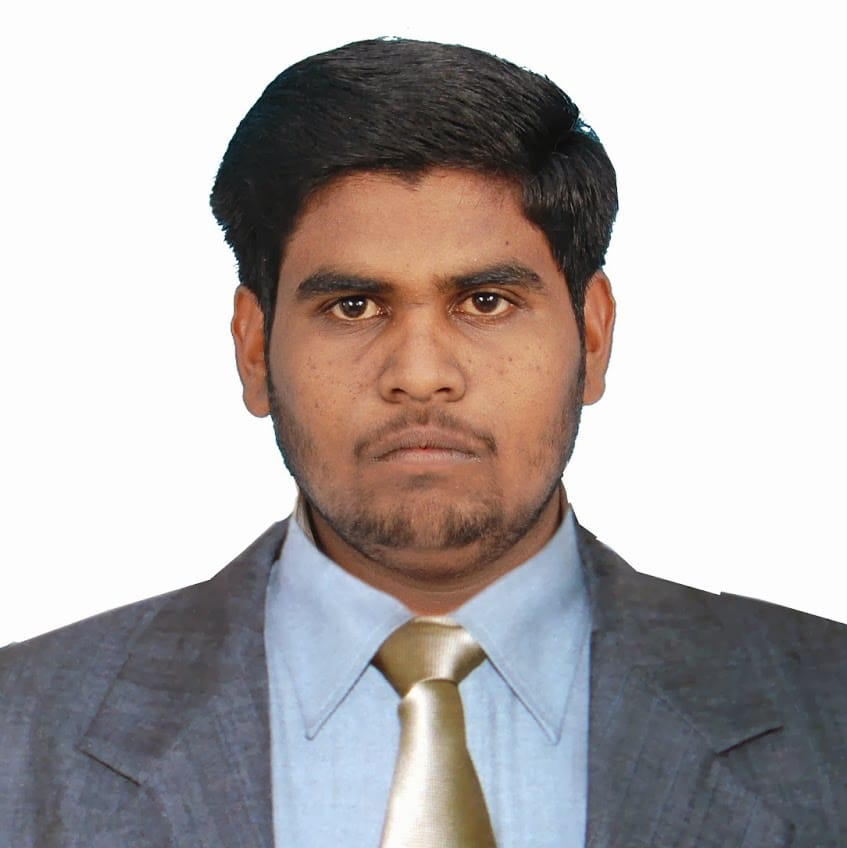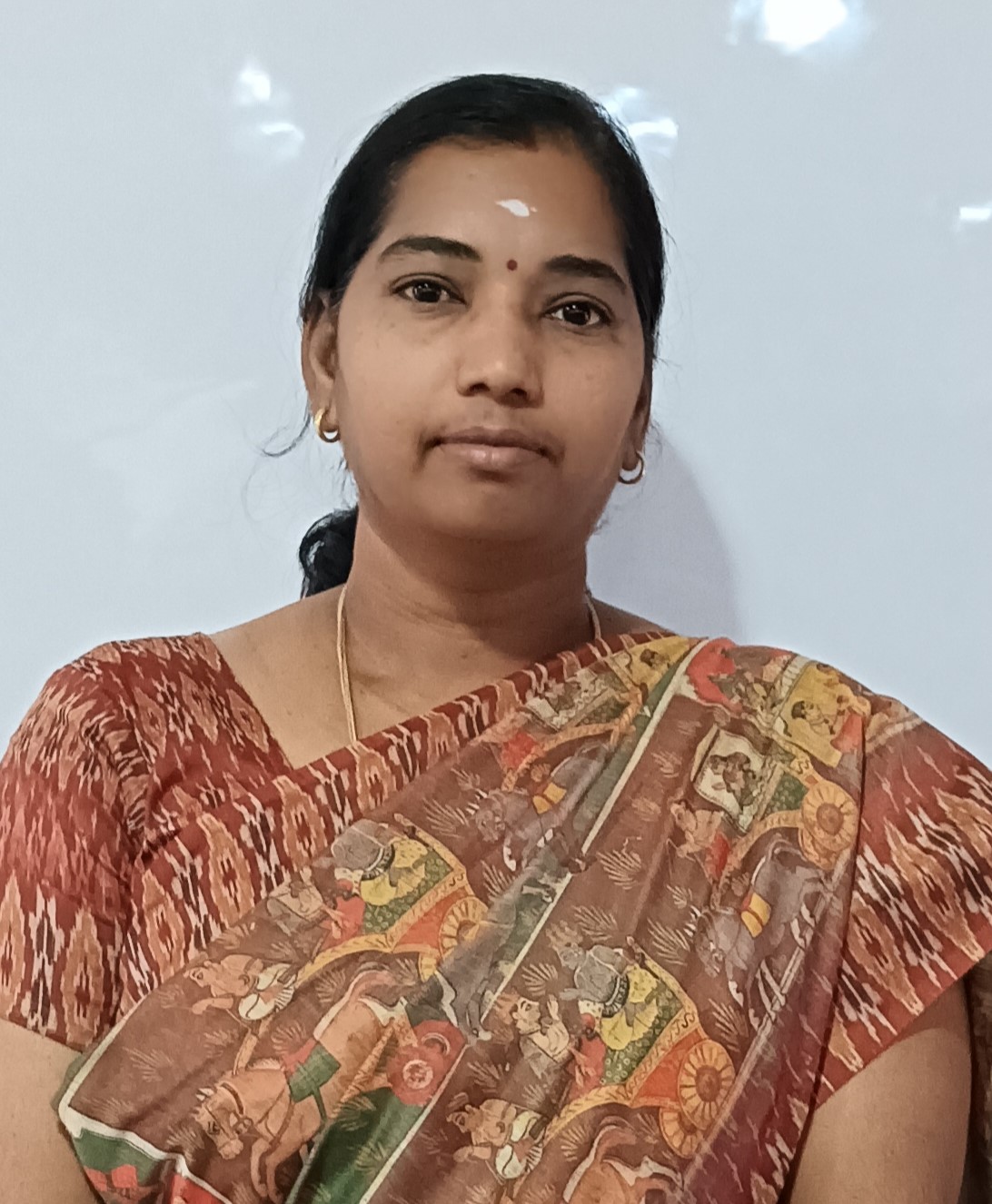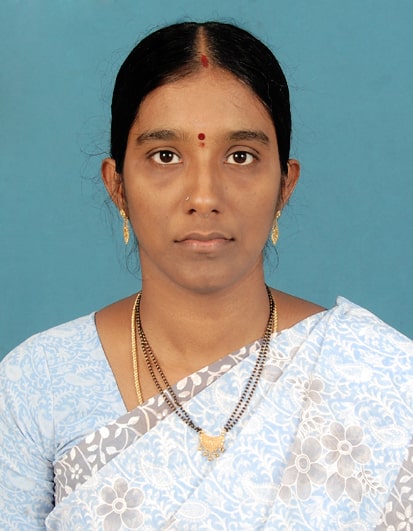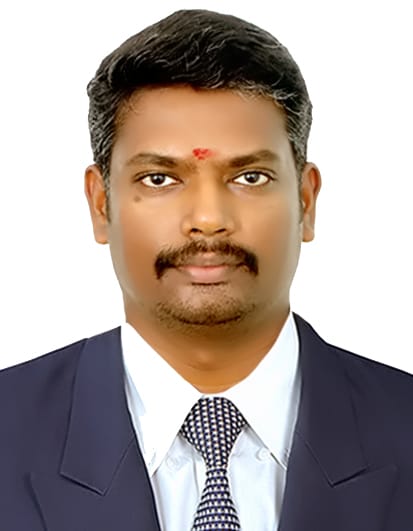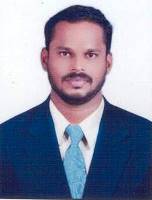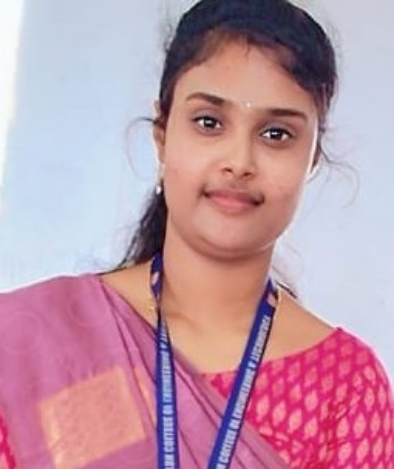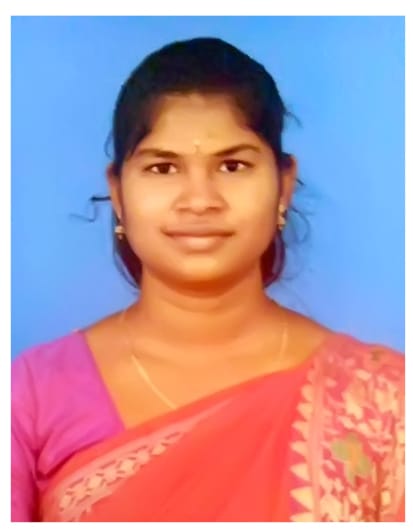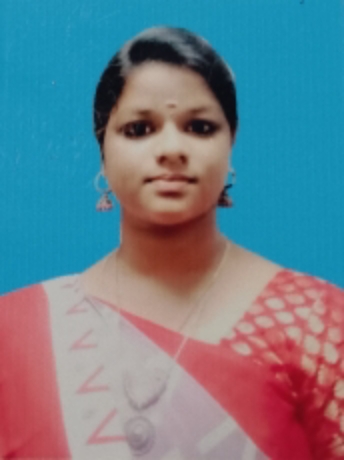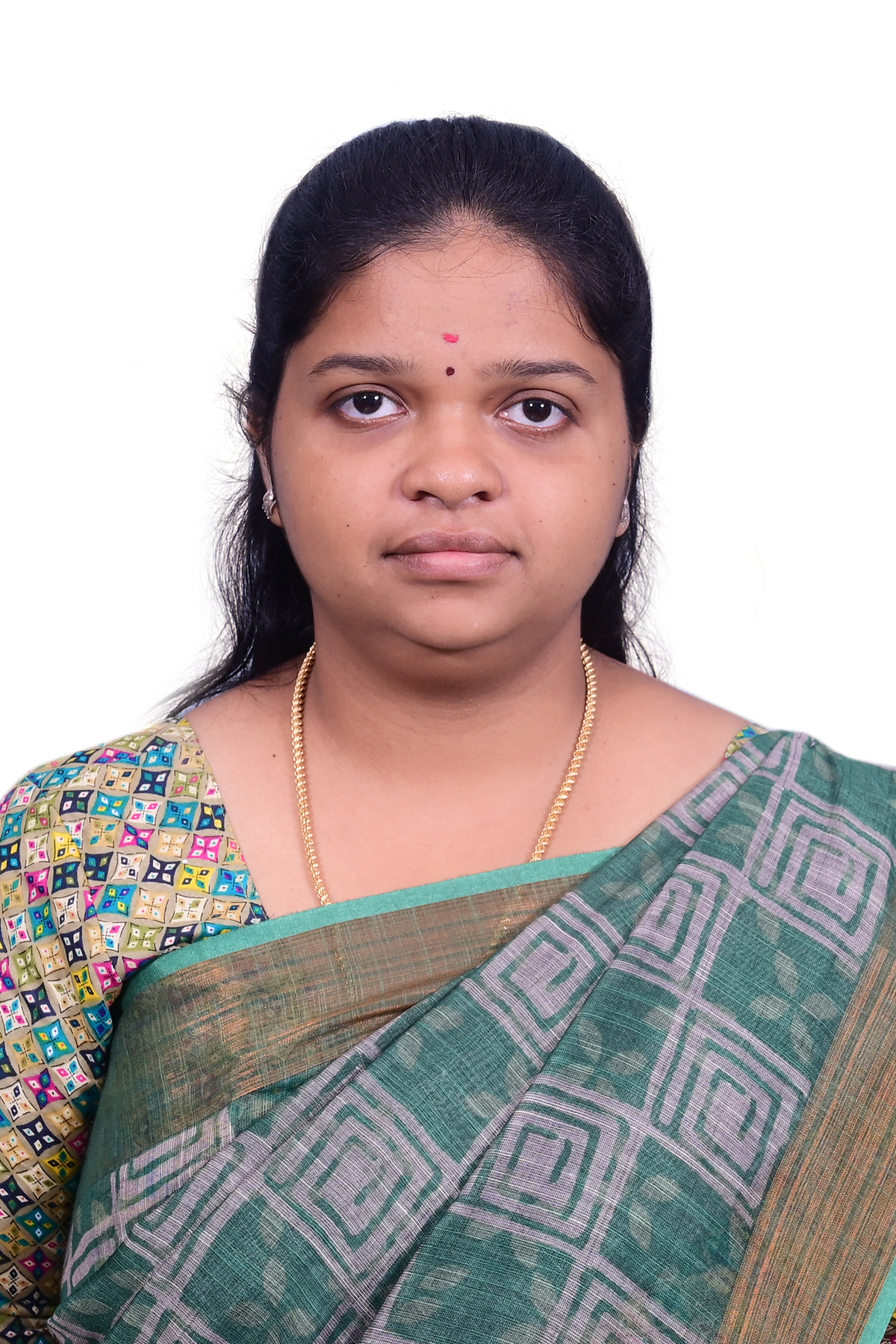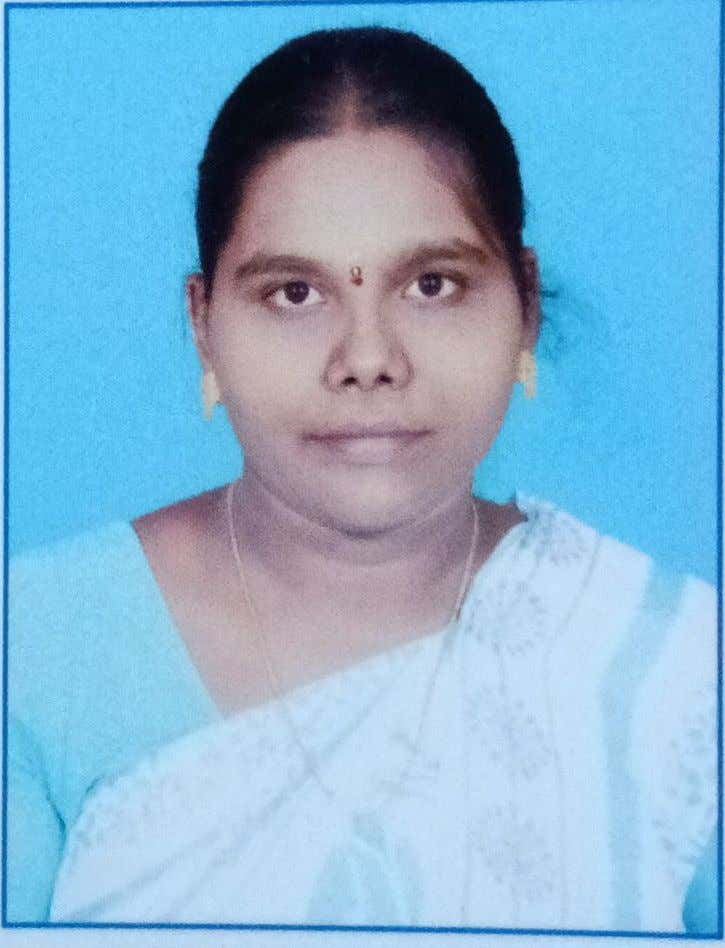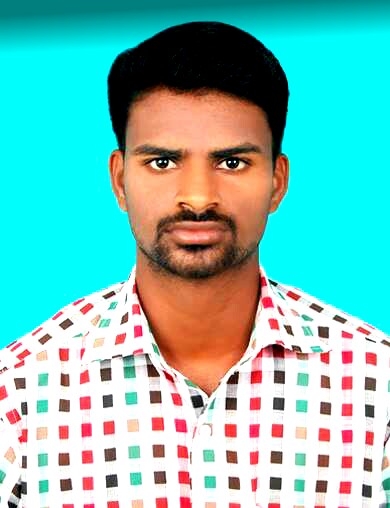Electronics and Communication Engineering
Department of Electronics and communication Engineering
The department of electronics and communication engineering was established in the year 2010. Then, it further extended with PG(M.E-Applied Electronics) course in 2014. Communication technology is one of the most sophisticated and rapidly changing application areas of electronics. It now pervades the lives of everyone, through mass communication networks and person-to-person communications based on fixed wireless networks. Our under graduate program provides a broad education in the fundamental principles and practice of electronics engineering. The program is very practical with an emphasis to develop the students' knowledge and technical abilities in the areas of electronics and communication engineering. The aim of the department is to provide the students with a solid scientific and technical background in the design, development, manufacturing of electronic devices and system used in a wide spectrum of applications. The department offers a congenial environment with excellent an infrastructural facility which acts as a platform in achieving the essentials in this modern and promising technology. Guest lectures, workshops, Industrial Visits, In-plant training, seminars, in- house projects in collaboration with well established companies and other personality development that cater to the quest of today's society as well as student professionals. Association is led by student representatives and supported by a team of dedicated faulty to motivate the students. The students organize events like technical quiz, contests through the association. Various workshops and seminars by academic experts as well as by industry experts are organized. Co-curricular and extracurricular activities are planned and executed through the association of the department. The department has latest simulation tools to cater to various specializations and is equipped with facilities for measurement, characterization and synthesis of experimental as well as theoretical results.
PROGRAMMES OFFERED:
UG COURSE:
1.B.E – ELECTRONICS AND COMMUNICATION ENGINEERING
PG COURSE:
1.M.E- APPLIED ELECTRONICS
Vision:
To produce prolific graduates with cutting edge technologies in academic, research and development to meet the societal needs in Electronics and Communication Engineering sectors.
Mission:
1.To engage the learner in emerging technology aids with competent faculty to provide effective academic process for growing industrial and business environment.
2.To frequently observe the young minds with emerging ideas to accomplish innovative research through interaction with industrial platforms ethically.
PEO (PROGRAM EDUCATIONAL OBJECTIVE)
Graduates can
1. PEO1: To enable graduates to pursue research, or have a successful career in academia or industries associated with Electronics and Communication Engineering, or as entrepreneurs.
2. PEO2: To provide students with strong foundational concepts and also advanced techniques and tools in order to enable them to build solutions or systems of varying complexity.
3. PEO3: To prepare students to critically analyse existing literature in an area of specialization and ethically develop innovative and research oriented methodologies to solve the problems identified.
PSO (PROGRAM SPECIFIC OUTCOME)
Graduates should be able to
PSO1: To adapt the recent trends in electronics and communication sectors to resolves the problem in Microwave Communication, Signals & Networking,Embedded Systems and VLSI to make them as successful engineer.
PSO2: An ability to analyse and enhance hardware and software skills,to develop quality product and to implement the sustainable energy solutions against societal and ecological issues through professional managerial practices.
Course Outcomes
| Regulation-2021-UG | |||
|---|---|---|---|
| YEAR /SEMESTER:II/III | |||
| C301-MA3355 RANDOM PROCESSES AND LINEAR ALGEBRA | |||
| C301.1 | Explain the fundamental concepts of advanced algebra and their role in modern mathematics and applied contexts. | ||
| C301.2 | Demonstrate accurate and efficient use of advanced algebraic techniques. | ||
| C301.3 | Apply the concept of random processes in engineering disciplines. | ||
| C301.4 | Understand the fundamental concepts of probability with a thorough knowledge of standard distributions that can describe certain real-life phenomenon. | ||
| C301.5 | Understand the basic concepts of one and two dimensional random variables and apply them to model engineering problems. | ||
| C302– EC3352 DIGITAL SYSTEMS DESIGN | |||
| C302.1 | Use Boolean algebra and simplification procedures relevant to digital logic. | ||
| C302.2 | Design various combinational digital circuits using logic gates. | ||
| C302.3 | Analyse and design synchronous sequential circuits. | ||
| C302.4 | Analyse and design asynchronous sequential circuits. | ||
| C302.5 | Build logic gates and use programmable devices | ||
| C303 –EC3351 CONTROL SYSTEMS | |||
| C303.1 | Compute the transfer function of different physical systems. | ||
| C303.2 | Analyse the time domain specification and calculate the steady state error. | ||
| C303.3 | Illustrate the frequency response characteristics of open loop and closed loop system response | ||
| C303.4 | Analyse the stability using Routh and root locus techniques. | ||
| C303.5 | Illustrate the state space model of a physical system and discuss the concepts of sampled data control system. | ||
| C304– EC3353 ELECTRONIC DEVICES AND CIRCUITS | |||
| C304.1 | Explain the structure and working operation of basic electronic devices. | ||
| C304.2 | Design and analyze amplifiers. | ||
| C304.3 | Analyze frequency response of BJT and MOSFET amplifiers | ||
| C304.4 | Design and analyze feedback amplifiers and oscillator principles. | ||
| C304.5 | Design and analyze power amplifiers and supply circuits | ||
| C305- EC3354 SIGNALS AND SYSTEMS | |||
| C305.1 | determine if a given system is linear/causal/stable | ||
| C305.2 | determine the frequency components present in a deterministic signal | ||
| C305.3 | Characterize continuous LTI systems in the time domain and frequency domain | ||
| C305.4 | Characterize discrete LTI systems in the time domain and frequency domain | ||
| C305.5 | compute the output of an LTI system in the time and frequency domains | ||
| C306–CS3362 C PROGRAMMING AND DATA STRUCTURES LABORATORY | |||
| C306.1 | Develop C programs for any real world/technical application. | ||
| C306.2 | Apply advanced features of C in solving problems. | ||
| C306.3 | Write functions to implement linear and non–linear data structure operations. | ||
| C306.4 | Suggest and use appropriate linear/non–linear data structure operations for solving a given problem. | ||
| C306.5 | Appropriately use sort and search algorithms for a given application. | ||
| YEAR/SEMESTER:II/IV | |||
| C401- EC3452 ELECTROMAGNETIC FIELDS | |||
| C401.1 | Relate the fundamentals of vector, coordinate system to electromagnetic concepts | ||
| C401.2 | Analyze the characteristics of Electrostatic field | ||
| C401.3 | Interpret the concepts of Electric field in material space and solve the boundary conditions | ||
| C401.4 | Explain the concepts and characteristics of Magneto Static field in material space and | ||
| C401.5 | Determine the significance of time varying fields | ||
| C402- EC3401 NETWORKS AND SECURITY | |||
| C402.1 | Explain the Network Models, layers and functions. | ||
| C402.2 | Categorize and classify the routing protocols. | ||
| C402.3 | List the functions of the transport and application layer. | ||
| C402.4 | Evaluate and choose the network security mechanisms. | ||
| C402.5 | Discuss the hardware security attacks and countermeasures | ||
| C403 – EC3451 LINEAR INTEGRATED CIRCUITS | |||
| C403.1 | Design linear and nonlinear applications of OP – AMPS | ||
| C403.2 | Design applications using analog multiplier and PLL | ||
| C403.3 | Design ADC and DAC using OP – AMPS | ||
| C403.4 | Generate waveforms using OP – AMP Circuits | ||
| C403.5 | CO5 : Analyze special function ICs | ||
| C404– EC3492 DIGITAL SIGNAL PROCESSING | |||
| C404.1 | Apply DFT for the analysis of digital signals and systems | ||
| C404.2 | Design IIR and FIR filters | ||
| C404.3 | Characterize the effects of finite precision representation on digital filters | ||
| C404.4 | Design multirate filters | ||
| C404.5 | Apply adaptive filters appropriately in communication systems | ||
| C405– EC3491COMMUNICATION SYSTEMS | |||
| C405.1 | Gain knowledge in amplitude modulation techniques | ||
| C405.2 | Understand the concepts of Random Process to the design of communication systems | ||
| C405.3 | Gain knowledge in digital techniques | ||
| C405.4 | Gain knowledge in sampling and quantization | ||
| C405.5 | Understand the importance of demodulation techniques | ||
| C406–GE3451 ENVIRONMENTAL SCIENCES AND SUSTAINABILITY | |||
| C406.1 | To recognize and understand the functions of environment, ecosystems and biodiversity and their conservation. | ||
| C406.2 | To identify the causes, effects of environmental pollution and natural disasters and contribute to the preventive measures in the society. | ||
| C406.3 | To identify and apply the understanding of renewable and non-renewable resources and contribute to the sustainable measures to preserve them for future generations. | ||
| C406.4 | To recognize the different goals of sustainable development and apply them for suitable technological advancement and societal development. | ||
| C406.5 | To demonstrate the knowledge of sustainability practices and identify green materials, energy cycles and the role of sustainable urbanization. | ||
| YEAR/SEMESTER:III/V | |||
| C501– EC3501 WIRELESS COMMUNICATION | |||
| C501.1 | Understand The Concept And Design Of A Cellular System. | ||
| C501.2 | Understand Mobile Radio Propagation And Various Digital Modulation Techniques. | ||
| C501.3 | Understand The Concepts Of Multiple Access Techniques And Wireless Networks | ||
| C501.4 | Characterize a wireless channel and evolve the system design specifications | ||
| C501.5 | Design a cellular system based on resource availability and traffic demands. | ||
| C502– EC3552 VLSI AND CHIP DESIGN | |||
| C502.1 | In depth knowledge of MOS technology | ||
| C502.2 | Understand Combinational Logic Circuits and Design Principles | ||
| C502.3 | Understand Sequential Logic Circuits and Clocking Strategies | ||
| C502.4 | Understand Memory architecture and building blocks | ||
| C502.5 | Understand the ASIC Design Process and Testing. | ||
| C503– EC3551 TRANSMISSION LINES AND RF SYSTEMS | |||
| C503.1 | Explain the characteristics of transmission lines and its losses. | ||
| C503.2 | Calculate the standing wave ratio and input impedance in high frequency transmission lines. | ||
| C503.3 | Analyze impedance matching by stubs using Smith Charts | ||
| C503.4 | Comprehend the characteristics of TE and TM waves. | ||
| C503.5 | Design a RF transceiver system for wireless communication | ||
| C504– CEC334 ANALOG IC DESIGN | |||
| C504.1 | Design amplifiers to meet user specifications. | ||
| C504.2 | Analyse the frequency and noise performance of amplifiers | ||
| C504.3 | Design and analyse feedback amplifiers and one stage op amps . | ||
| C504.4 | Analyse stability of op amp. | ||
| C504.5 | Testing experience of logic circuits. | ||
| C505– CEC366 IMAGE PROCESSING | |||
| C505.1 | Know and understand the basics and fundamentals of digital image processing, such as digitization, sampling, quantization, and 2D-transforms. | ||
| C505.2 | Operate on images using the techniques of smoothing, sharpening and enhancement. | ||
| C505.3 | Understand the restoration concepts and filtering techniques. | ||
| C505.4 | Learn the basics of segmentation, features extraction, compression and recognition methods for color models. | ||
| C505.5 | Comprehend image compression concepts | ||
| YEAR /SEMESTER:III/VI | |||
| C601- ET3491EMBEDDED SYSTEMS AND IOT DESIGN | |||
| C601.1 | Explain the architecture and features of 8051. | ||
| C601.2 | Develop a model of an embedded system. | ||
| C601.3 | List the concepts of real time operating systems. | ||
| C601.4 | Learn the architecture and protocols of IoT. | ||
| C601.5 | Design an IoT based system for any application. | ||
| C602-CS3491 ARTIFICIAL INTELLIGENCE AND MACHINE LEARNING | |||
| C602.1 | Use appropriate search algorithms for problem solving | ||
| C602.2 | Apply reasoning under uncertainty. | ||
| C602.3 | Build supervised learning models | ||
| C602.4 | Build ensembling and unsupervised models | ||
| C602.5 | Build deep learning neural network models | ||
| YEAR /SEMESTER:IV/VII | |||
| GE3791 HUMAN VALUES AND ETHICS | |||
| C701.1 | Identify the importance of democratic, secular and scientific values in harmonious functioning of social life | ||
| C701.2 | Practice democratic and scientific values in both their personal and professional life. | ||
| C701.3 | Find rational solutions to social problems. | ||
| C701.4 | Behave in an ethical manner in society | ||
| C701.5 | Practice critical thinking and the pursuit of truth. | ||
| EC3711SUMMER INTERNSHIP | |||
| C702.1 | System-level design processes, verification and validation techniques, manufacturing and production processes in the firm or research facilities in the laboratory/research institute | ||
| C702.2 | Analysis of industrial / research problems and their solutions | ||
| C702.3 | Documentation of system specifications, design methodologies, process parameters, | ||
| C702.4 | Preparing of technical report and presentation | ||
| YEAR /SEMESTER:IV/VII | |||
| C801-EC8311 PROJECT WORK/INTERNSHIP | |||
| C801.1 | Identify agricultural engineering problems reviewing available literature. | ||
| C801.2 | Identify appropriate techniques to analyze complex agricultural engineering problems. | ||
| C801.3 | Apply engineering and management principles through efficient handling of project, have a clear idea of his/her area of work and they are in a position to carry out the work in a systematic way | ||
PROGRAMME OUTCOMES(POs)
Po Graduate Attribute
1.Engineering Knowledge: 1.Apply the knowledge of mathematics, science, engineering fundamentals, and an engineering specialization to the solution of complex engineering problems.
2.Problem Analysis: 2.Identify, formulate, review research literature, and analyse complex engineering problems reaching substantiated conclusions using first principles of mathematics, natural sciences, and engineering sciences.
3.Design/ Development of Solutions: 3.Ability to design an irrigation system to meet the desired needs within realistic Constraints such as economic, environmental, social, political, ethical, and sustainability considerations.
4.Conduct Investigations of Complex Problems: Ability to think creatively, to formulate problem statements, to communicate effectively, to synthesize information, and to evaluate agricultural systems.
5.Modern Tool Usage: 5.Ability to function in interdisciplinary teams within the Institute and also with other organizations at National/ International level while planning the research projects.
6.The Engineer and Society: Ability to use the techniques, skills and modern engineering tools necessary for Agricultural engineering practice.
7.Environment and Sustainability: 7.Will develop competencies in computer and automatic control systems, information systems, mechanical systems, natural resource systems to solve engineering problems. 8.Ethics: Graduates will be able to express themselves clearly in oral and verbal communication needs.
8.Ethics : Graduates will be able to express themselves clearly in oral and verbal communication needs.
9.Individual and Team Work: 9.Ability to devise a strategy or action plan to utilize the acquired knowledge in increasing water- use efficiency, farm mechanization and Post harvest technology etc.
10.Communication: Graduates will be capable of self-education in emerging problems and understand the value of lifelong learning in Food Technology, Farm Machinery and Food Processing.
11.Project Management and Finance: Demonstrate knowledge and understanding of the engineering and management principles and apply these to one’s own work, as a member and leader in a team, to manage projects and in multidisciplinary environments.
12.Life-long Learning: 12.Recognize the need for, and have the preparation and ability to engage in independent and life-long learning in the broadest context of technological change.
Faculty List
Curriculum Details
| S.NO | Regulation | File |
|---|---|---|
| 1. | B.E.-ECE-R2021 | Click here |
| 2. | B.E.-ECE-R2017 | Click here |
Value Added Courses
| Academic Years |
|---|
Innovative teaching
• Project-Based Learning: This approach allows students to work on real-time engineering challenges throughout the semester. By connecting theoretical concepts with practical applications, students design, test, and implement solutions using ECE tools, building teamwork, creativity, and problem-solving skills.
• Flipped Classroom: In this method, students engage with basic theory outside of class through videos and notes. Classroom time is dedicated to discussions, problem-solving, and hands-on activities, encouraging active participation and deeper understanding through interactive learning.
• Simulation-Based Learning: Using tools like MATLAB, Scilab, Multisim, and HFSS, students visualize and analyze complex circuits and communication systems. This approach allows for experimentation without physical hardware, improving conceptual clarity and boosting technical confidence.
• Virtual and Remote Labs: Virtual labs provide students with the opportunity to perform experiments online using simulations or remote hardware. These labs ensure access to experiments anytime, from anywhere, supporting flexible, outcome-based learning and reinforcing theoretical concepts.
• Maker Space & Hands-on Workshops: Students have access to maker spaces where they can design and prototype practical solutions. Workshops on PCB design, Arduino, IoT, robotics, and SDR encourage hands-on learning, helping students expand their skill sets and foster creativity beyond the classroom syllabus.
• Industry Co-Teaching: Industry experts collaborate with faculty to deliver selected modules or lectures. This gives students exposure to current industry practices, trends, and real-world applications, bridging the gap between academia and industry to enhance career readiness.
• Problem-Based Learning: Students are presented with real engineering problems to solve in groups. They conduct independent research and analysis, fostering critical thinking, decision-making, and teamwork. This approach makes students active participants in their learning journey.
• Gamification: By introducing quizzes, competitions, badges, and leaderboards, gamification makes learning more engaging and fun. It motivates students to actively participate in technical subjects, reinforcing concepts through interactive and play-based challenges.
• Research-Integrated Teaching: Students are encouraged to engage with research papers, particularly those from IEEE, to explore emerging technologies. By presenting their findings, simulating circuits, and writing short reviews, students develop research skills and gain deeper insights into current technological trends.
• Blended Learning Using LMS: Blended learning combines the best of traditional classroom teaching with online platforms like Moodle or Google Classroom. This approach allows students to access study materials, quizzes, and discussions at any time, promoting continuous learning and improving accessibility and learning outcomes.
Laboratory Details
Our department has eight well equipped laboratories
1. Farm Machinery Laboratory:
The Farm Machinery laboratory of the college is well equipped with modern energy-efficient farm machines like disc plough, disc harrow, sprayer, seed drill, rice transplanter, weeder and all kinds of machines required for different farm operations.
2. Farm Power Lab:
The lab has facility for exposing the students to tractors, engines and their systems. The lab contains cut sections and models for various tractors and engine and their system such as crank arrangement, valve system, lubrication system, fuel system, gear system, hydraulic system etc.
3. Material Testing Lab:
This lab is well equipped with equipment like Universal Testing Machine, Fatigue, Impact, Torsion & Hardness testing machines to evaluate the strength & properties of different materials.
4. Soil Mechanics Lab:
This lab is essential as soil possess a variety of physical properties of soil. Soil mechanics lab is well equipped with all equipments required for identification and classification of soils.
5. Post-Harvest technology lab:
The Processing and food engineering laboratory is well equipped with various kinds of modern equipments for the training of UG students. Some of the equipments are Porosity apparatus, Coefficient of friction apparatus, Paddy thresher, Oil expeller and Groundnut decorticator
6. Irrigation Laboratory:
A laboratory with models of almost all the irrigation and drainage is available which provides a means for effective training of the students. Some of the equipments are evaporimeter, double ring infiltrometer, irrigation automation working model, drip and sprinkler irrigation setup,
6. Irrigation Laboratory:
Faculty members are actively encouraged to participate in Faculty Development Programs (FDPs), short-term courses, and staff development initiatives on advanced topics. This ensures that they remain well-equipped with the latest knowledge and skills.
Event Details
| Electronics and Communication Engineering | |||
|---|---|---|---|
| S.NO | EVENTS TITLE | Link(s) | |
| 1 | Effective Research Paper Writing and Avoiding Plagiarism Pitfalls | VIEW | |
| 2 | X-MAX Technology | VIEW | |
| 3 | Storage Area Network (SAN) | VIEW | |
| 4 | Electronics Fundamentals | VIEW | |
| 5 | One day workshop on Exploring Embedded Systems with Arduino: Hands-on Applications | VIEW | |
| 6 | Advanced Transistor Technology in Nanoelectronics for VLSI | VIEW | |
| 7 | Dept. Cultural “Vibe Sync ECE 25 | VIEW | |
| 8 | Online Faculty Development Program on " 6G Wireless Network: Fundamentals,Trends and Challenges" | VIEW | |
| 9 | Two Days Hands-on Workshop on "PCB Design Process and Prototyping" | VIEW | |
Magazine & Newsletter Details
| S No. | Name of the Newsletter | File |
|---|---|---|
| 1. | Newsletter 2023-2024 | Click here |
Lecture Notes And Lab Manual
| YEAR | SUB.CODE & SUBJECT | LINK |
|---|---|---|
| II | EC3361-Electronic Devices and Circuits Laboratory | Manual |
| II | EC3353-Electronic Devices and Circuits | Lecturer Notes |

